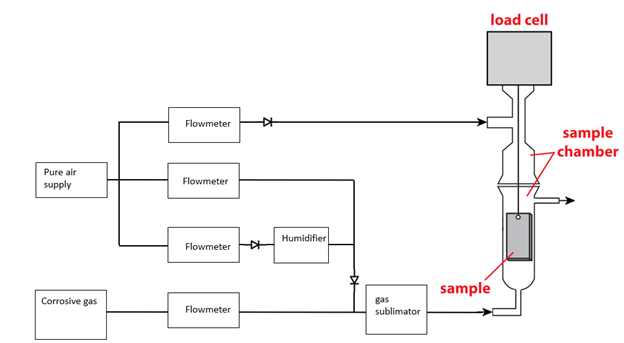CDI Capability: Sample Exposure Chamber
The sample exposure chamber provides a capability for exposure and in-situ analysis of samples in highly corrosive gasses.
The sample exposure chamber provides a capability for exposure and in-situ analysis of samples in highly corrosive gasses.

The custom-built exposure cell provides a location to expose samples to precisely mixed corrosive gasses. The addition of a 0.02 mg accuracy weigh cell allows for in-situ gravimetric analysis, providing a capability of quantifying corrosion rates. This system allows for the precise study of reactions which are not possible in commercial gravimetric systems (e.g. thermal gravimetric analysis) due to high corrosivity.
Corrosive gas exposure cell with in-situ gravimetric analysis capability
The custom-built exposure cell provides an ability to expose samples to a controlled concentrations of corrosive gasses with gravimetric analysis. The system consists of a gas mixing manifold compatible with humidified air (or inert gas) and corrosive gas coupled to a sublimation vessel and a sample exposure chamber. Inclusion of a precision balance for gravimetric analysis allows for the study of corrosion rate in varying environments. Inert gas flowing at the upper stages shields the load cell from the corrosive environment, allowing for the in-situ measurement of a sample up to 200g with a repeatability of +/- 0.02 mg. The glass sample chamber and sublimation vessel operates as a flow though system, ensuring the system minimizes any absorption of corrosive gasses. This high degree of chemical compatibility provides a precise atmosphere at both low and high gas concentrations compared to a sealed system.
The modular nature of the system allows for a high degree of customization, such as increasing the volume of the exposure cell, the addition of additional corrosive gas mixes, heating the system, or optical analysis.